Orchids and Garbage
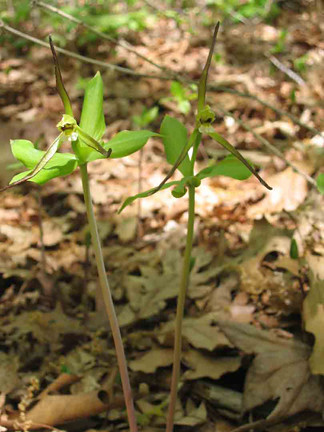
Ups and downs, highs and lows, thus are my moods when I am out in the field - either ecstatic or crestfallen. Today, I was both. Somewhere in Staten Island (you'll never get locations out of me), I saw orchids, NYS-rare plants, and lots of degredation caused by humans.
First, the good stuff. In a 40' x 40' area, saw about 500 stems of whorled pogonia (Isotria verticillata), half of which were in flower. This orchid is a congener (same genus) as the Federally-endangered small whorled pogonia (I. medeoloides). These orchids were found in a dry, heath dominated forest they love so, with bracken fern, red/black/white oaks, red maple, sweet gum, sweet pepperbush, blueberries, pinkster azalea, black cherry, bitternut, and sassafras.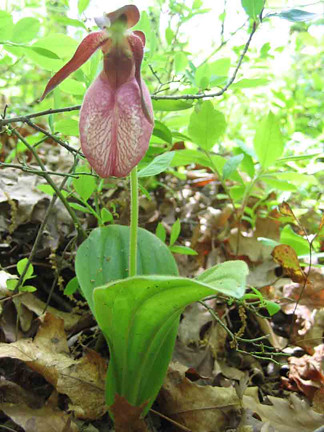
One of the most pilfered plants in the wild because it's arguably our most beautiful native orchid, pink ladyslipper (Cypripedium acaule).
Another wonderful site - pink ladyslipper (Cypripedium acaule) in bloom. Found some teasers early on - just leaves. The one in the photo was hiding behind a fallen log. In all we found 12 ladyslippers, but only 3 were in flower. Years ago, this area was called "Orchid Hill". I think the locals got wind of it and have been stealing orchids from the wild. Little do they know, that once these flowers are taken out of their natural habitat, they die. They cannot survive without filimentous fungi called microrrhizae, with which they have a mutualistic relationship. The fungi, extending into the orchid and the surrounding substrate, bring nutrients and water to the plant, and are critical in every phase of the plant's life. Orchid seeds are extremely small. As such, they have no resources to grow on their own. Without these fungi, the plants would never germinate.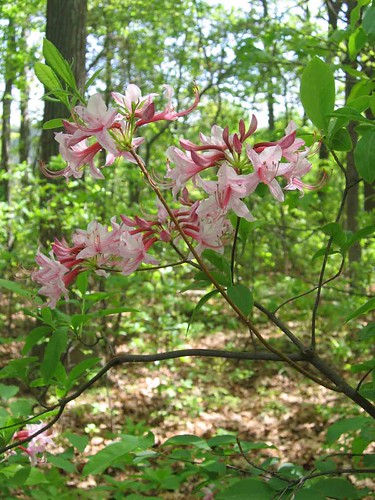
A common compatriot of these orchids, pinkster azalea (Rhododendron periclymenoides), a native shrub.
Other plant finds: whorled indian cukecumber (Medeola virginiana), deerberry (Vaccinium stamineum), red chokeberry (Aronia arbutifolia), black huckleberry (Gaylussacia baccata), interrupted fern (Osmunda claytonii), Virginia chain fern (Woodwardia virginica). Another neat find was sweetbay magnolia (Magnolia virginiana). This NYS-rare tree is found in wet areas, SI is the northern part of its range. Now, such plants, being rare, should be given some TLC. That was decidedly not the case in this park, as you can see in the photo below. (Warning, this is where the story starts to take a turn for the worse).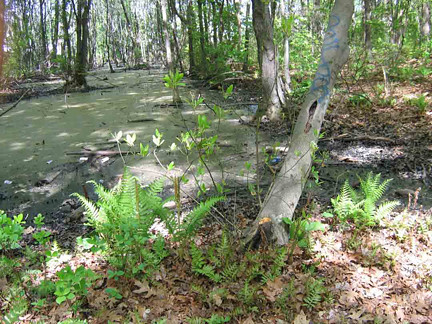
Here, the tree has clearly been vandalized, it has graffiti and a crown (base) damaged by fire. This is not a happy tree. Unhappy trees don't live very long, and so one less sweetbay in New York State.
Other areas of the forest are not regenerating due to disturbance. High volume foot traffic and mountainbike/ATV use contribute to the lack of shrubs or wildflowers in the photo below. And obviously, couches are not part of a forest ecosystem.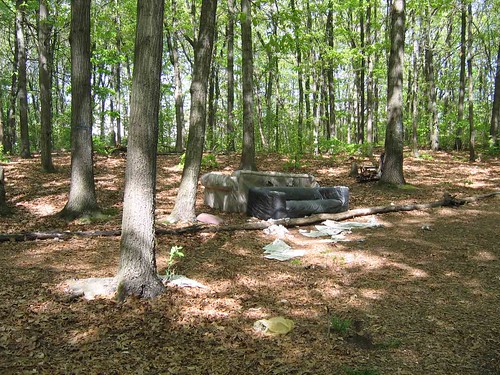
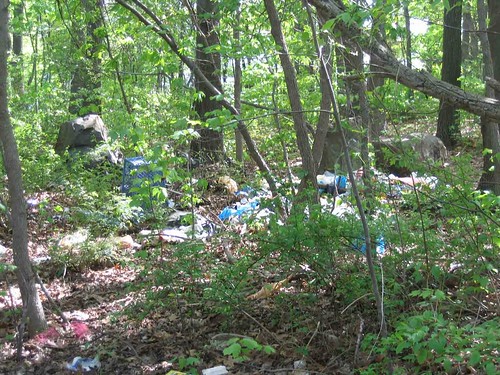





No comments:
Post a Comment